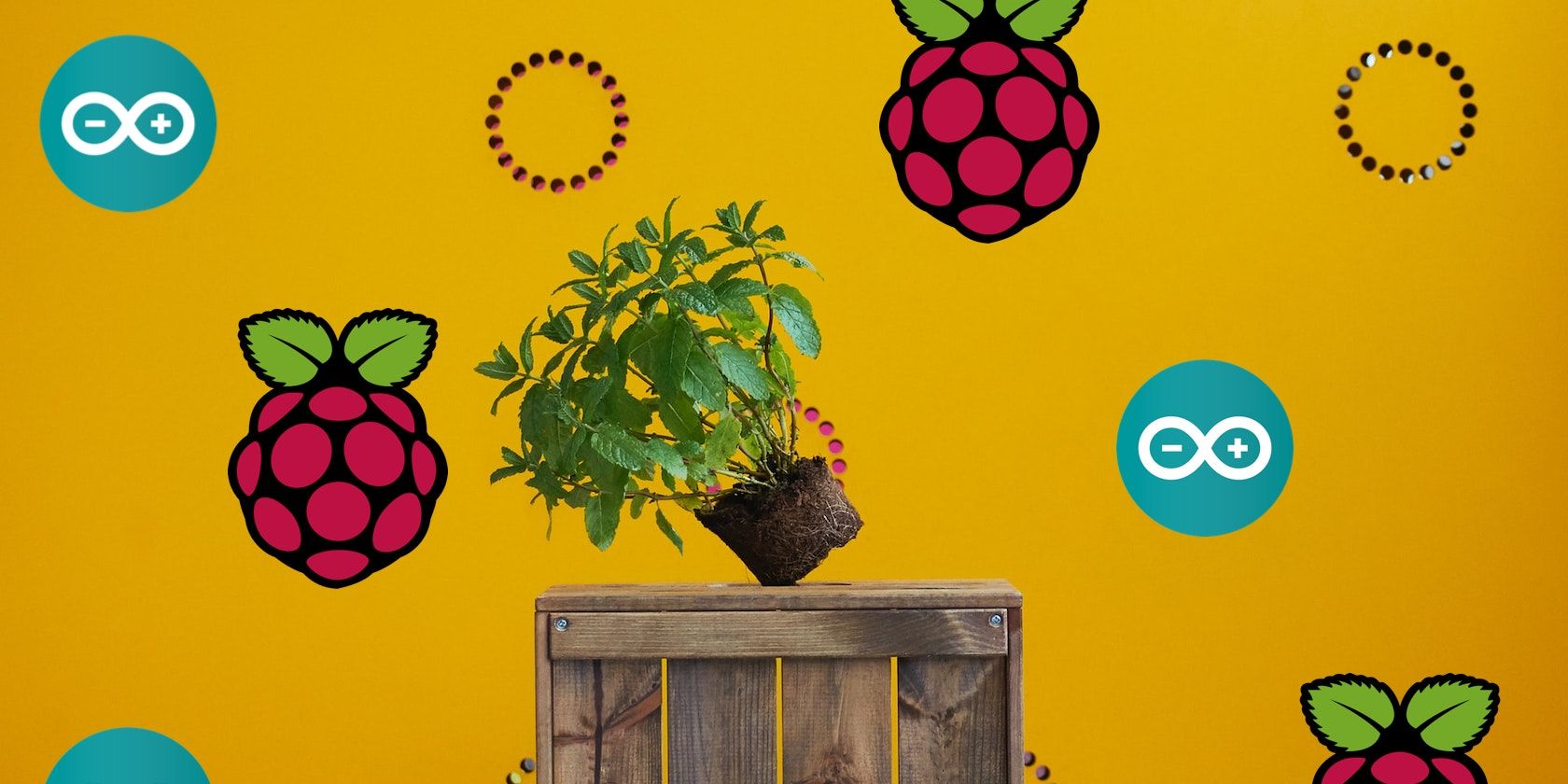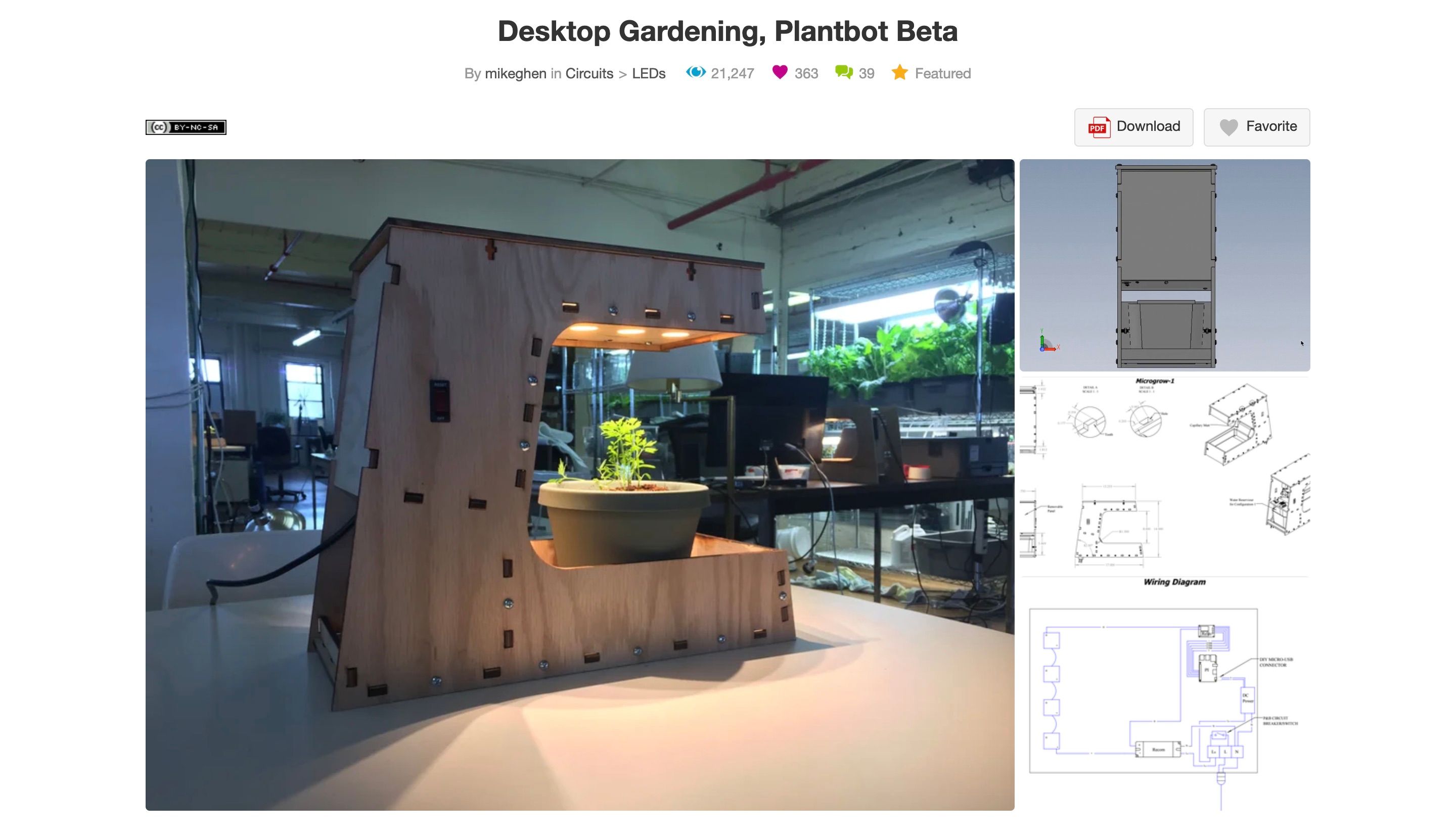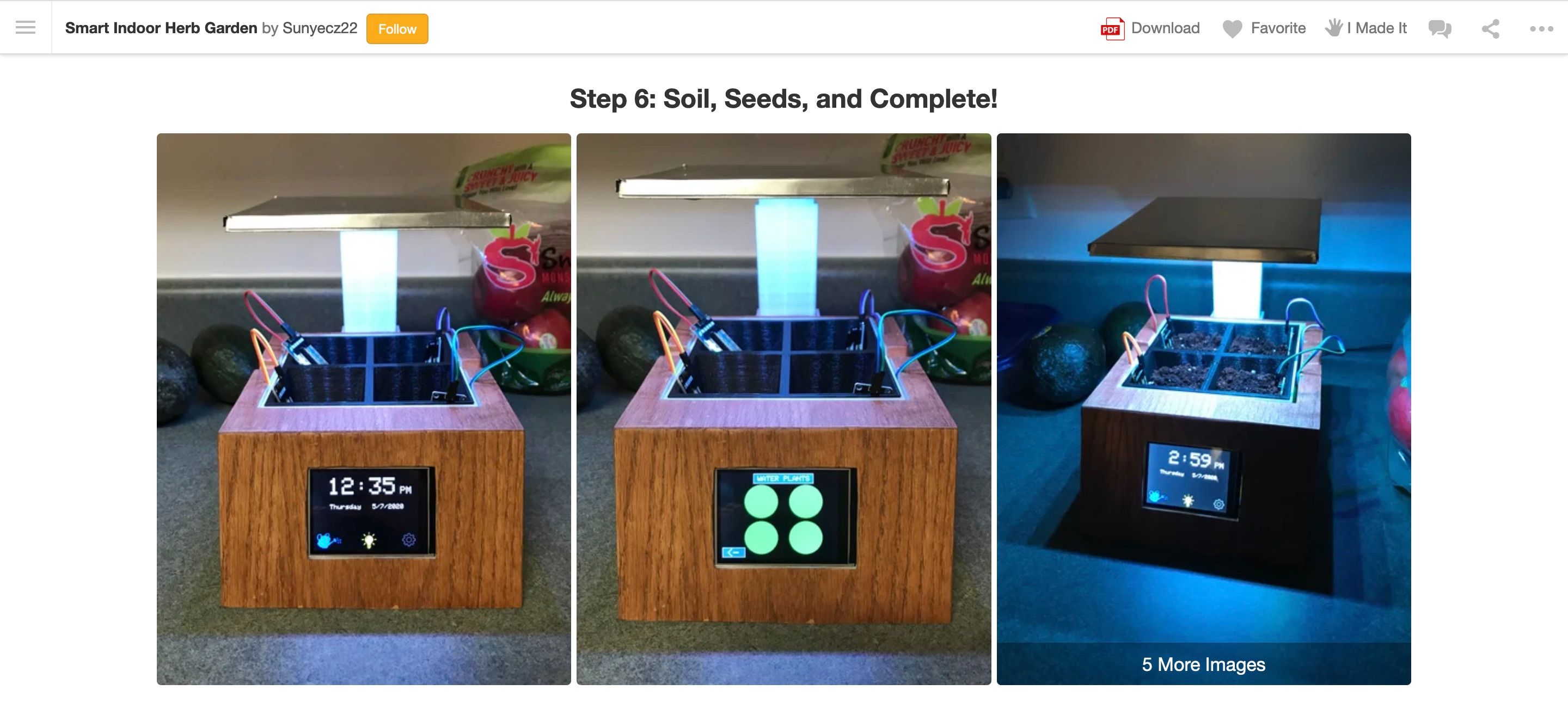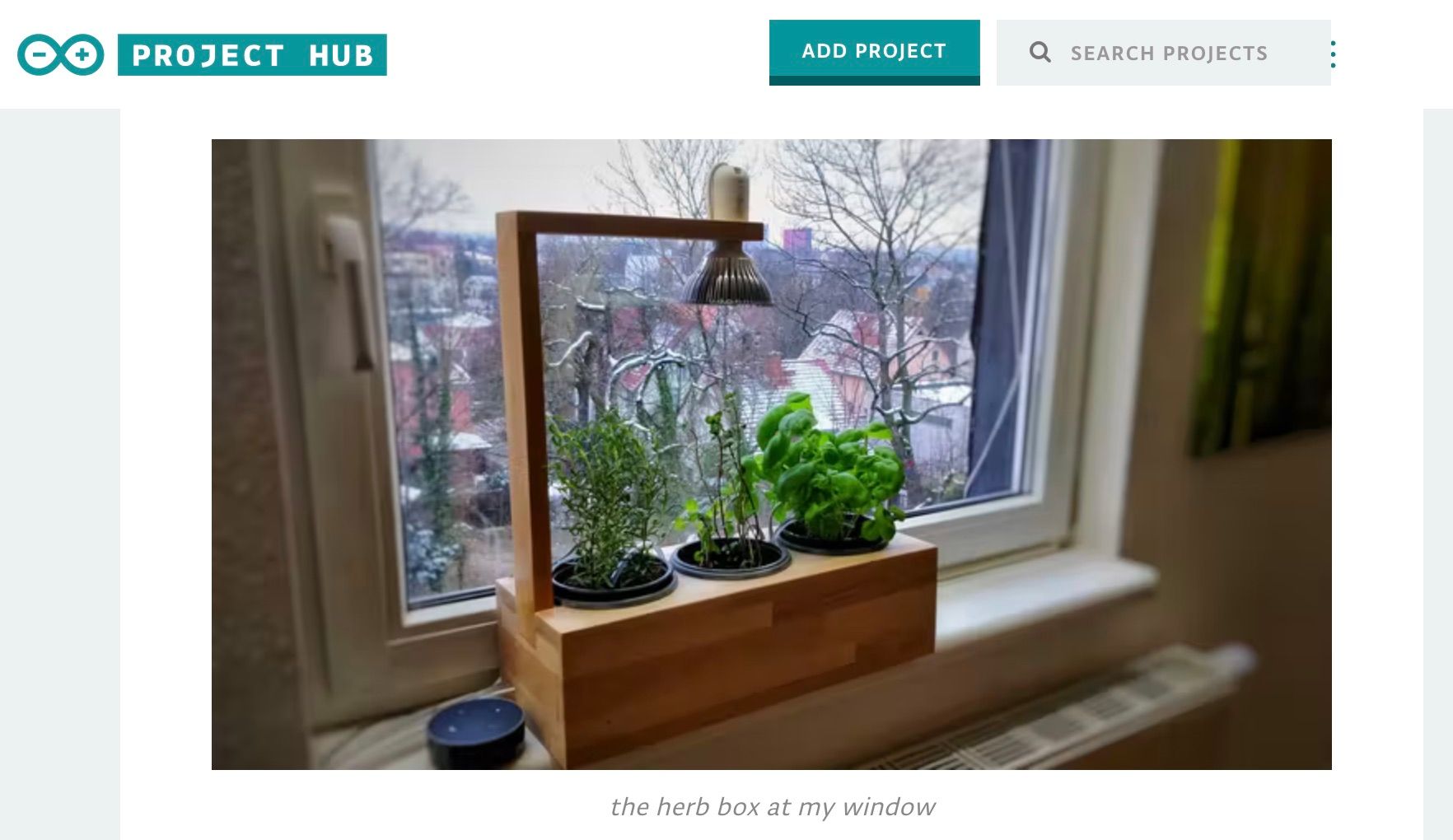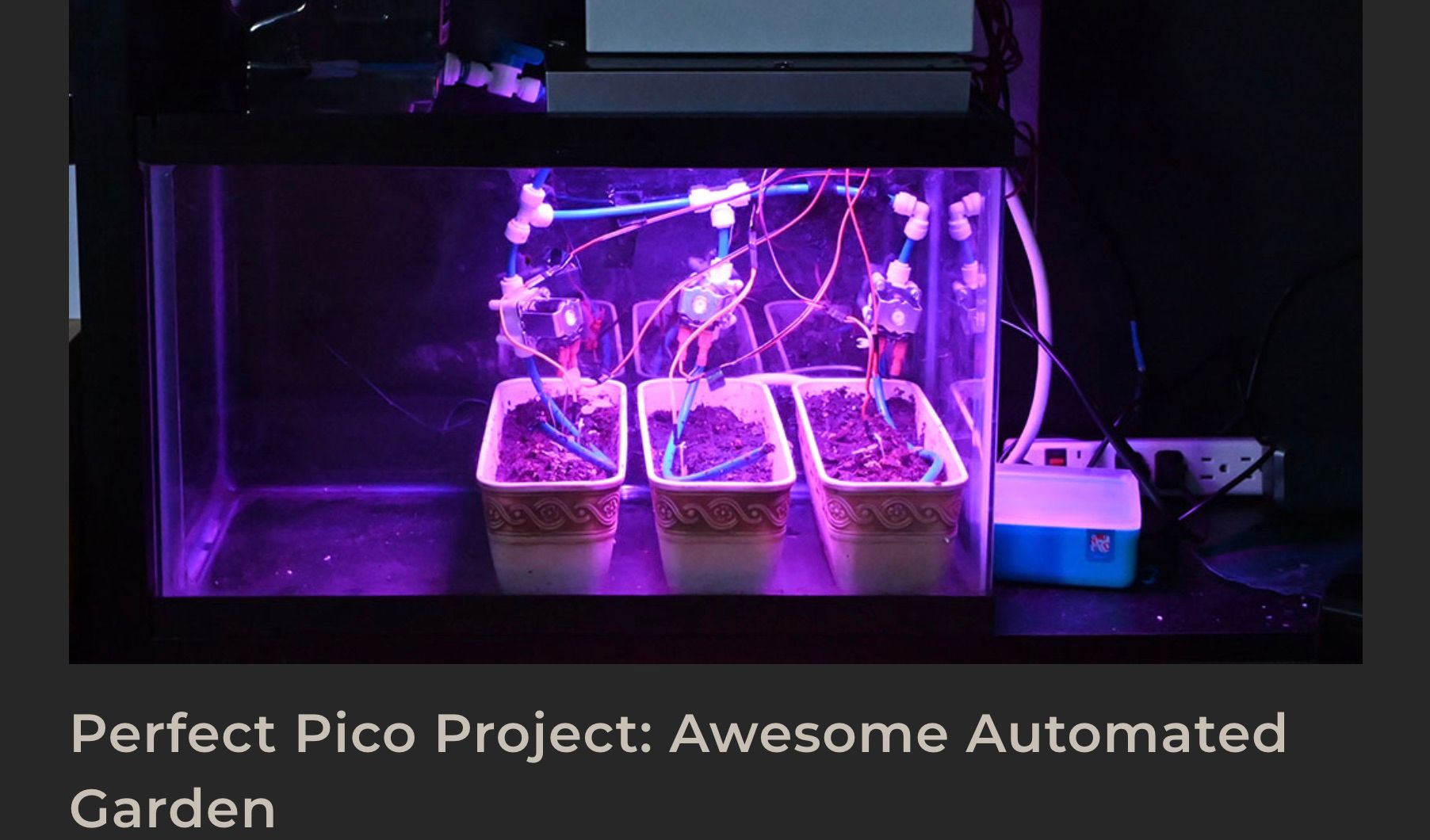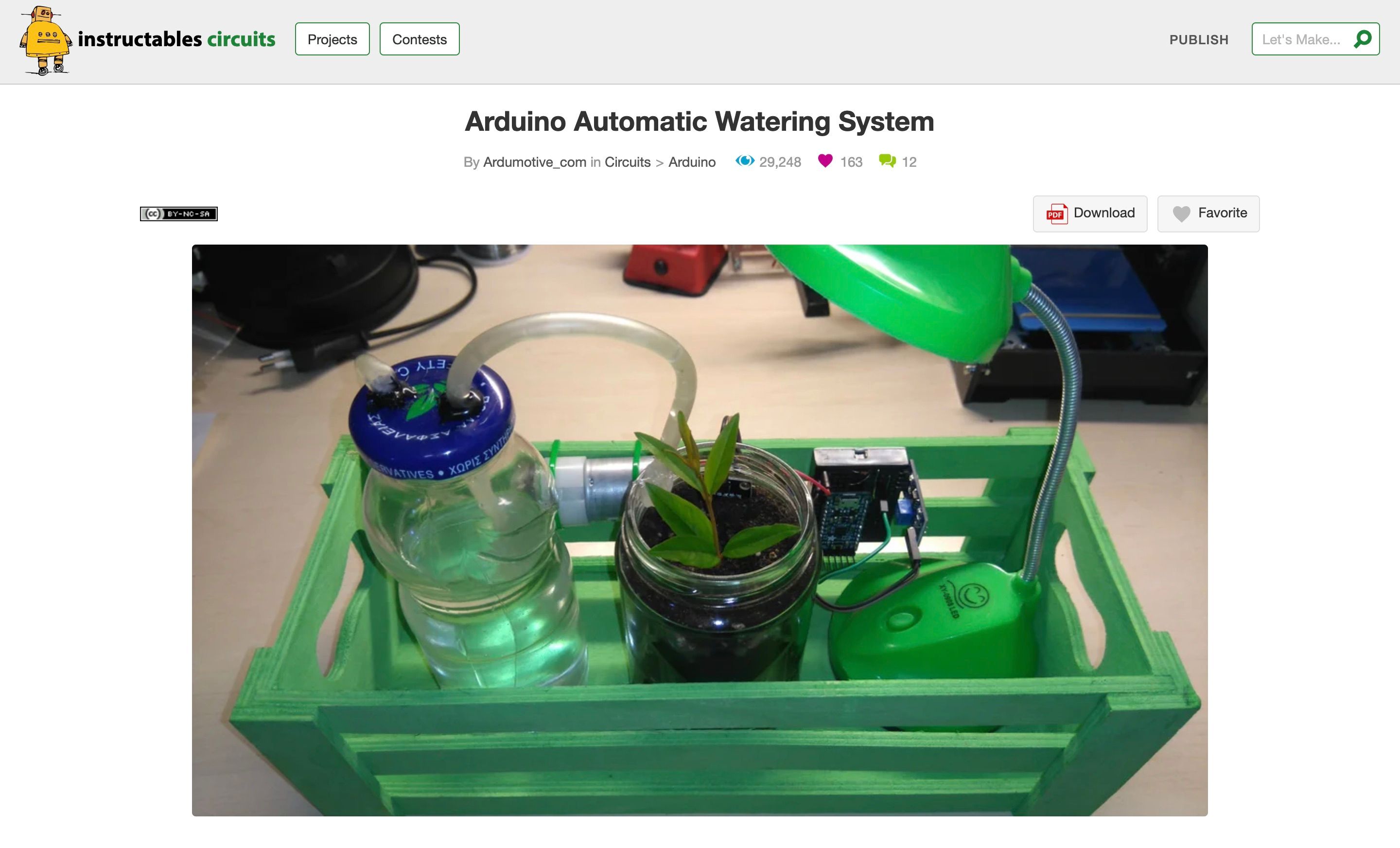Gardening and electronics are a brilliant match and what better way to get started then with desktop gardens? They're small, simple to build, and a perfect way to put your Arduino or Raspberry Pi to good use. You can keep it simple by just wiring up some LED grow lights, or you can extend it to include moisture sensors and automatic watering.
1. Raspberry Pi Desktop Garden
This desktop garden is housed in a fantastic wooden structure made from laser-cut plywood. If you want to use this design for your own urban garden, you can download the file from the creator via Instructables.
Nicknamed Plantbot, this system uses a Raspberry Pi and Wi-Fi dongle to operate LED grow lights. But of course you can skip the Wi-Fi dongle if you have a Wi-Fi enabled model like the Raspberry Pi 3, 4, Zero W, or Zero 2 W.
If you want to know more about how to connect your device to your Wi-Fi network, you can read through our guide to setting up Wi-Fi on a Raspberry Pi.
While many electronic grow systems can get complicated with sensors and programming, this project keeps it nice and simple with just wiring LEDs. This makes it a great project for beginner electronic hobbyists.
2. Arduino Smart Desktop Herb Garden
Small, self-contained, and stylish, this desktop herb garden is perfect for an apartment or small home. It can fit four small seed pots, which might not be a lot, but it can work well for growing a few herbs to use in the kitchen.
In any case, this is a good project to learn how to wire basic electronic components. The four main parts are a 2.8-inch TFT touchscreen, an RTC clock module, four moisture sensors, and an LED strip, plus a few MOSFET transistors.
From these parts, you can program the display function to set the time and duration of the LED lights, as well as showing the moisture levels of your plants.
If you want to re-create the garden structure described in the Instructables guide, you will need a 3D printer. Once printed, add in some wood veneer to give a faux wood look and you will then have a sleek and polished final product.
3. Simple Arduino Plant Watering
A desktop garden can be as simple as taking a pot plant you already have and hooking it up to an automatic watering system. This video will walk you through the beginner-friendly process to show you just how doable it is.
For this project, you will be wiring a moisture sensor and a mini pump to an Arduino Uno, then compiling a small bit of code. Beyond the initial setup, you might find you need to experiment with the placement of the moisture sensor, or tinker with the calibration to get it just right.
Basically, the system will pump water into the pot until the moisture sensor passes a given threshold, i.e. it becomes wet enough. Keep in mind that this threshold might be different for each pot depending on how much water your plant needs, and differences in soil type or pot size.
4. Desktop Aeroponics Garden
Not all garden systems use dirt as the growing medium: some projects make use of a method called aeroponics, like this desktop planter. Instead of a traditional watering system, the plant is fed with a fine mist containing fertilizer.
A few different construction methods go into this design, including 3D printing, laser cutting, and vacuum casting. This might not be available to everyone, but reading through the work log on the Arduino Project Hub will still give you plenty of resources and information to take away.
We would recommend checking out the code for the display of sensor data, which is a great component to incorporate into your own project. On the other hand, if you do have access to the necessary machines, the 3D printing and laser cutting files are all free to download.
5. Alexa Voice Controlled Herb Box
With a bit of programming experience, you can create a desktop garden that can be controlled with Alexa commands.
This creator set up a few handy commands for his desktop planter, one of them being "Alexa, ask herb box how my plants are", which tells you which plants are dry. While the project on the Arduino Project Hub serves more as a rough guide than detailed instructions, it will give you a good starting point to launch off from.
Working with Alexa commands is definitely more suited to those who have some coding experience, so if you feel comfortable giving it a go, try your hand at implementing voice commands to your garden.
Wondering what else Alexa can do? Here is a list of every Alexa command and what it does.
6. Raspberry Pi Pico Garden
This desktop garden isn't the prettiest, but it does make use of parts you could find for cheap second-hand. In this case, a fish tank is used to contain the plants, while a plastic bottle is employed as the water tank.
You can explore the guide, which includes a full parts list, on the blog Ctrl Alt Develop. The components list looks long, but around half of those are optional so make sure to check the notes. If you're looking for something that will automatically run watering and light cycles, then check out the downloadable code.
7. Easy Arduino Automatic Watering System
This automatic watering system for your desktop garden is as simple as it gets. With very minimal parts, you can get up and running in just 30 minutes. It's the perfect project for lazy gardeners.
An Adafruit Trinket Pro board was used in this tutorial, but you can of course use an Arduino instead. Parts include plastic tubing, a small air pump, a soil hygrometer, and a plastic bottle to hold the water. The Trinket/Arduino is used to turn the pump on and off depending on the soil hygrometer readings, and the code for this function can be found on Instructables.
The setup won't take very long, so for an extra challenge you can read through the notes in the code to look for ways to tweak the system.
Gardening With Electronics
The best part about desktop garden builds is that there are projects to suit a range of ability levels. You can build a project with just a grow lamp or water pump, or you can take it to the next level and program voice commands.
Use these projects to learn more about electronics and be rewarded by watching your plant grow with minimal effort.

